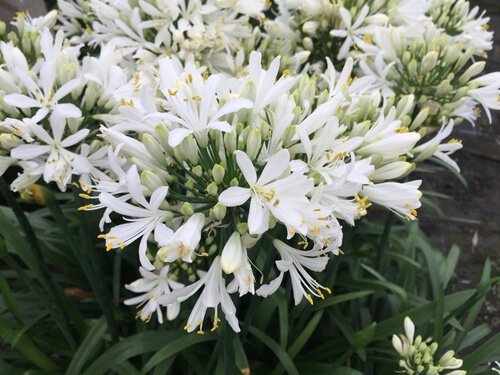Description
Agapanthus, commonly known as lily of the Nile that has attractive foliage and showy flowers. Here are some horticultural notes on this plant genus:
Climate: Most Agapanthus species prefer warm and sunny climates, but some can tolerate cold and frosty conditions. They are generally drought-tolerant plants, but some species can also tolerate moisture and humidity.
Soil: Agapanthus prefer well-draining soils that are not too fertile. They can grow in a range of soil types, including sandy, loamy, and clay soils.
Light: Agapanthus plants require full sun to thrive, but some species can tolerate partial shade.
Watering: Once established, Agapanthus plants can tolerate periods of drought, but they should be watered regularly during hot and dry weather to prevent the soil from drying out completely.
Fertilizer: Agapanthus plants do not require regular fertilization, but they can benefit from an occasional application of a balanced fertilizer during the growing season.
Pruning: Most Agapanthus species do not require pruning, but deadheading spent flowers can help promote continuous blooming. If the plant becomes too leggy or overgrown, it can be pruned back in late winter or early spring.
Propagation: Agapanthus can be propagated from seed or by dividing established plants in the spring or fall.
Pests and diseases: Agapanthus are generally pest and disease-resistant, but they can be susceptible to fungal diseases in overly moist conditions.


